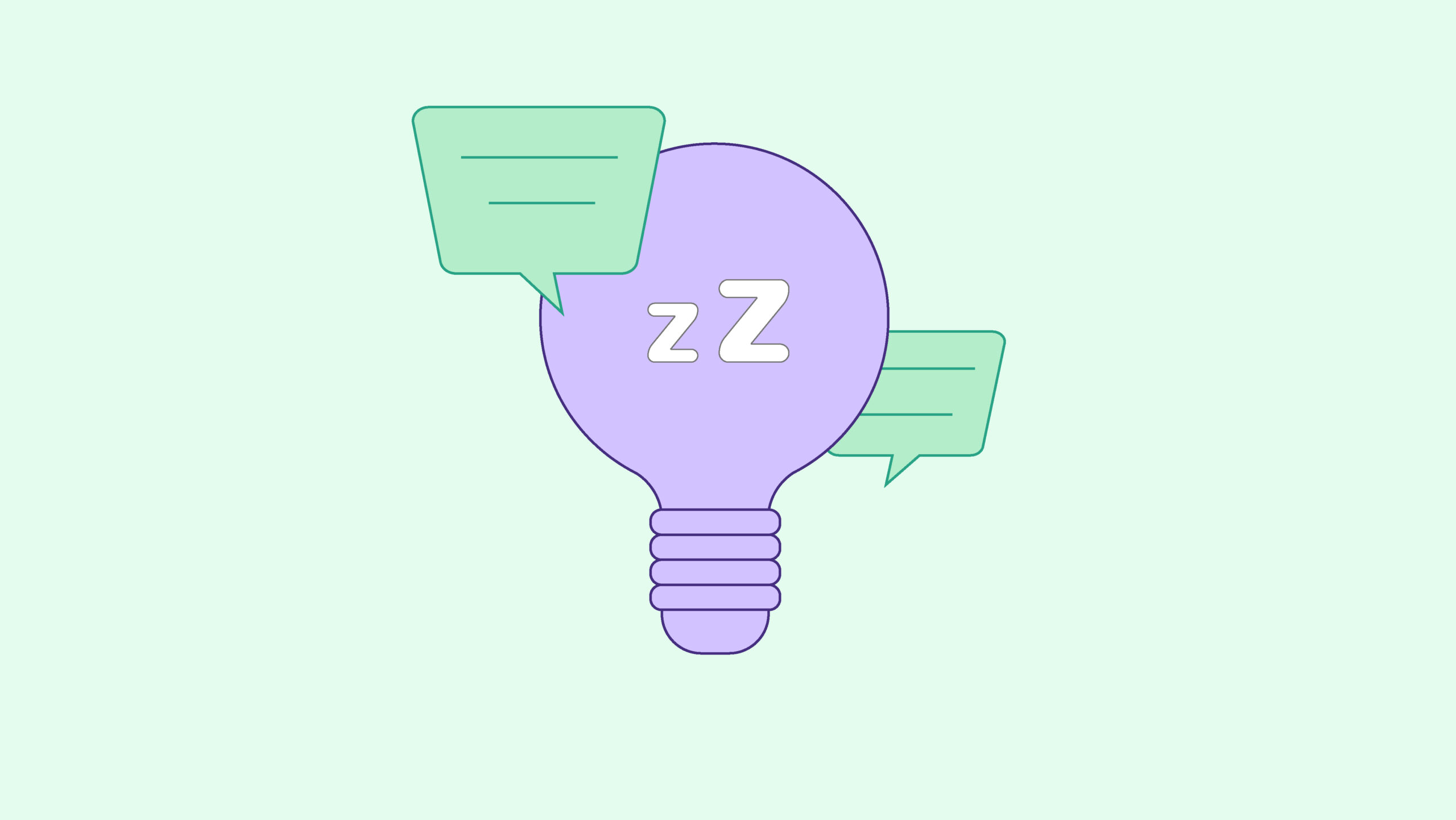
How to Fall Asleep Fast
Dr. Nayantara Santhi, PhD
Dr. Nayantara Santhi is an associate professor of psychology at Northumbria University in Newcastle. Santhi’s body of work includes numerous articles on how circadian rhythms regulate an individual’s sleep-wake cycle. Santhi’s articles have also focused on related elements such as bright light exposure and melatonin production.
- Building better sleep habits and practicing proper sleep hygiene can help you fall asleep faster and improve the quality of your sleep over time. Small changes to your daily routine can contribute to significant improvements in sleep latency and overall sleep quality.
- Techniques such as progressive muscle relaxation, scheduled worry time, visualization, and stimulus control training can aid in reducing stress and anxiety, leading to quicker sleep onset and better sleep.
- Creating a sleep-conducive environment by limiting screen time before bed, maintaining a consistent sleep schedule, avoiding daytime naps, and moderating caffeine intake can significantly improve sleep quality.
About 70 million Americans 1 Verified Source Centers for Disease Control and Prevention (CDC) The United States’ health protection agency that defends against dangers to health and safety. See the source have a hard time falling asleep. If you’re part of this group, you’re probably looking for some tips on how to fall asleep fast. While major changes may not happen overnight, there are many things you can do to build better sleep habits and proper sleep hygiene. Over time, these things can help you fall asleep faster and get a better night’s sleep.
How Long Should It Take You To Fall Asleep?
 The amount of time it takes you to fall asleep is called sleep latency. Average healthy sleep latency for adults is between 10 and 20 minutes 2 Verified Source ScienceDirect One of the largest hubs for research studies and has published over 12 million different trusted resources. See the source .
The amount of time it takes you to fall asleep is called sleep latency. Average healthy sleep latency for adults is between 10 and 20 minutes 2 Verified Source ScienceDirect One of the largest hubs for research studies and has published over 12 million different trusted resources. See the source .
Falling asleep faster than this isn’t necessarily a good thing. It can be a huge clue that you’re sleep deprived. However, if you’re finding that it takes you 30 minutes to an hour to fall asleep, or you’re not sleeping at all, there are some things you can do to spend less time tossing and turning and get better quality sleep.
Tips To Help You Fall Asleep Faster
You can practice some of these tips on the spot, when you’re lying in bed at night trying to fall asleep. Others take more forethought, so you’ll have to work them into your daily routine to really reap the benefits.
Practice Progressive Muscle Relaxation
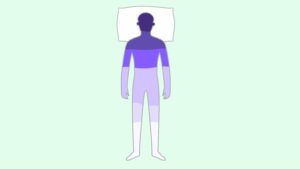 Progressive muscle relaxation is a calming technique that was created in the 1920s. It uses the principles of top-down and bottom-up processing. In top-down processing, you use your central nervous system, specifically two areas of the brain called your cerebral cortex and cerebellum, to contract and release your muscles. This holding and releasing of tension triggers bottom up processing that goes from your muscles to brain and serves as a signal to relax.
Progressive muscle relaxation is a calming technique that was created in the 1920s. It uses the principles of top-down and bottom-up processing. In top-down processing, you use your central nervous system, specifically two areas of the brain called your cerebral cortex and cerebellum, to contract and release your muscles. This holding and releasing of tension triggers bottom up processing that goes from your muscles to brain and serves as a signal to relax.
To practice progressive muscle relaxation, you contract each muscle in your body for five seconds and then release, waiting 10 seconds before moving to the next area of your body. This relaxation technique is not only connected to better sleep, it’s been shown to reduce stress and anxiety 3 Verified Source National Library of Medicine (NIH) World’s largest medical library, making biomedical data and information more accessible. See the source and boost mood.
Start with your facial muscles and work your way down your entire body, contracting (but not tensing) each muscle and then quickly releasing it. You may not notice a difference right away, but making this part of your bedtime routine can help reduce body stress, promote deeper sleep, and help you fall asleep quickly.
Schedule Worry Time
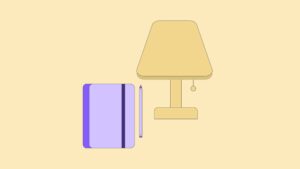 If you’re a worrier, you already know that it’s not easy to control when you worry and what you worry about. You may often find that your mind starts racing as soon as you lie in bed at night, thinking of everything you have to do the next day or that you didn’t accomplish today. While you can’t eliminate your worries, one way to combat this is by scheduling specific worry time.
If you’re a worrier, you already know that it’s not easy to control when you worry and what you worry about. You may often find that your mind starts racing as soon as you lie in bed at night, thinking of everything you have to do the next day or that you didn’t accomplish today. While you can’t eliminate your worries, one way to combat this is by scheduling specific worry time.
This method, called stimulus control training 5 Verified Source National Library of Medicine (NIH) World’s largest medical library, making biomedical data and information more accessible. See the source , involves setting aside a specific time of day to spend worrying. Every day at a specific time, you’ll set your timer for 30 minutes and get as many worries out as possible. Once the 30 minutes are over, you have to get back to the regularly scheduled programming of the day.
You can keep a journal for noting down your worries and concerns, and it can also help to write down potential solutions or steps to take to minimize your fears.
The more you practice this, the more you train your mind to only worry at the scheduled time. This can make it easier for you to fall asleep at night, since you’re not worrying as you lie in bed.
SEE ALSO: Avoid These Bad Sleep Habits For A Better Night’s Sleep
Picture Your Happy Place
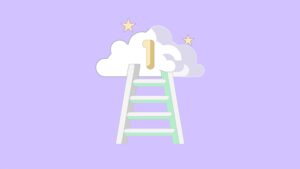 Picturing your happy place isn’t just a way to calm you down when you’re feeling stressed. Visualization is a powerful tool that can actually help you fall asleep.
Picturing your happy place isn’t just a way to calm you down when you’re feeling stressed. Visualization is a powerful tool that can actually help you fall asleep.
In a study published in Behavior Research and Therapy 6 Verified Source ScienceDirect One of the largest hubs for research studies and has published over 12 million different trusted resources. See the source , researchers divided 41 people with insomnia into three separate groups and gave each group a different set of instructions: try to distract yourself, distract yourself using imagery, or no instructions. After the study period, they found that the group instructed to distract themselves with imagery had a shorter sleep onset latency and less frequent and distressing pre-sleep cognitive activity compared to the group not given any instructions.
Get Out of Bed
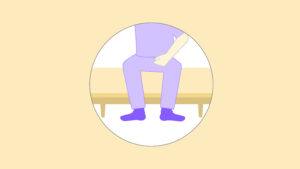 Getting out of bed may not seem like a productive way to fall asleep, but it’s another form of stimulus training. If you lie in bed worrying and toss and turn for a while, it can create the wrong type of connection in your brain. Instead of viewing your bed as a place for relaxation, it will start to become synonymous with a lack of sleep.
Getting out of bed may not seem like a productive way to fall asleep, but it’s another form of stimulus training. If you lie in bed worrying and toss and turn for a while, it can create the wrong type of connection in your brain. Instead of viewing your bed as a place for relaxation, it will start to become synonymous with a lack of sleep.
If you can’t fall asleep within 20 minutes, get out of bed and go read a book until you feel sleepy again. When you do, go back to bed and try to fall asleep again. The one caveat here: Try not to turn the TV on or look through your phone since the blue light and/or mindless social media scrolling can have the opposite effect.
SEE ALSO: Will Drinking Warm Milk Make You Go to Sleep?
Tell Yourself to Stay Awake
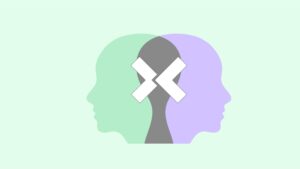 Telling yourself to stay awake may seem counterintuitive, but sometimes when you try to make something happen, your body does the exact opposite. This technique, called paradoxical intention, can reduce anxiety around going to bed 8 Verified Source National Library of Medicine (NIH) World’s largest medical library, making biomedical data and information more accessible. See the source and actually help you fall asleep faster.
Telling yourself to stay awake may seem counterintuitive, but sometimes when you try to make something happen, your body does the exact opposite. This technique, called paradoxical intention, can reduce anxiety around going to bed 8 Verified Source National Library of Medicine (NIH) World’s largest medical library, making biomedical data and information more accessible. See the source and actually help you fall asleep faster.
The next time you’re lying in bed awake at night, tell yourself to keep your eyes open or just stay awake a few minutes longer to see if it actually has the opposite effect.
This works the opposite way too. Sometimes when you’re lying in bed trying to will yourself to fall asleep, you end up creating stress and anxiety that keeps you awake. It’s easier said than done, but try not to overthink going to sleep. When you feel sleepy, get in bed and practice visualization or progressive muscle relaxation right away, before you start to panic that you’re not going to get enough sleep.
Take a Bath Before Bed
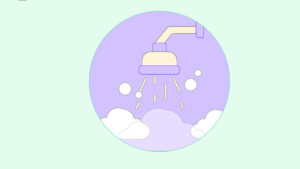 Studies show that taking a warm shower or bath before bed can improve sleep quality and help you fall asleep faster. Before you go to bed, your body temperature naturally drops 9 Verified Source Oxford Academic Research journal published by Oxford University. See the source . This drop in temperature sends a signal to your brain that it’s time to go to sleep.
Studies show that taking a warm shower or bath before bed can improve sleep quality and help you fall asleep faster. Before you go to bed, your body temperature naturally drops 9 Verified Source Oxford Academic Research journal published by Oxford University. See the source . This drop in temperature sends a signal to your brain that it’s time to go to sleep.
Taking a warm bath or shower stimulates that thermoregulatory system and jumpstarts that natural process. The warm water heats your body up, and then your body responds by dropping the temperature in response and making you sleepy.
Even just 10 minutes 10 Verified Source National Library of Medicine (NIH) World’s largest medical library, making biomedical data and information more accessible. See the source in a warm bath or shower one to two hours before bedtime is enough to help improve your sleep latency and the overall quality of your sleep. If you don’t like the idea of getting in the bath or shower at night, a warm foot bath 11 Verified Source National Library of Medicine (NIH) World’s largest medical library, making biomedical data and information more accessible. See the source can also help.
Write Your To-Do List Before You Get Into Bed
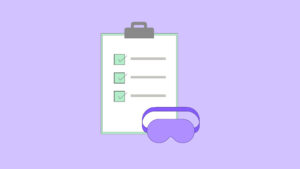 Have you ever been lying in bed, ready to fall asleep when all of a sudden you start going through your entire to-do list in your head? This is a common problem that can be alleviated by physically writing your to-do list out before you get into bed.
Have you ever been lying in bed, ready to fall asleep when all of a sudden you start going through your entire to-do list in your head? This is a common problem that can be alleviated by physically writing your to-do list out before you get into bed.
In one study published in the Journal of Experimental Psychology: General 12 Verified Source National Library of Medicine (NIH) World’s largest medical library, making biomedical data and information more accessible. See the source , researchers divided participants into two groups. They instructed the first group to spend five minutes writing out a detailed to-do list for the next day. The second group was told to write a list of completed tasks from the previous few days. The researchers found that the group that wrote their to-do lists out fell asleep faster than the second group. And the more detailed the to-do lists, the faster they fell asleep.
SEE ALSO: 3 Ways to Fix Your Sleep Schedule
Ditch the Screens
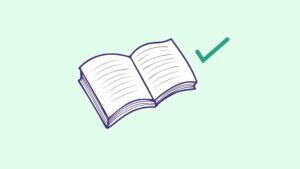 Electronics have become the go-to bedtime activity of choice, but they’re hurting your sleep more than helping it. TVs, phones, and laptops emit short wavelength blue light that inhibits the natural production of melatonin 13 Verified Source National Library of Medicine (NIH) World’s largest medical library, making biomedical data and information more accessible. See the source , a hormone that plays a major role in your sleep-wake cycle. When melatonin production is suppressed, you have a harder time falling (and staying) asleep.
Electronics have become the go-to bedtime activity of choice, but they’re hurting your sleep more than helping it. TVs, phones, and laptops emit short wavelength blue light that inhibits the natural production of melatonin 13 Verified Source National Library of Medicine (NIH) World’s largest medical library, making biomedical data and information more accessible. See the source , a hormone that plays a major role in your sleep-wake cycle. When melatonin production is suppressed, you have a harder time falling (and staying) asleep.
Shut your electronics down at least a half hour before bed (one to two hours is better) and read in bed instead. Reading in bed not only reduces stress and helps you wind down, it’s also been shown to improve sleep quality 14 Verified Source National Library of Medicine (NIH) World’s largest medical library, making biomedical data and information more accessible. See the source .
It’s important to note that it’s best to read an actual printed book. The screen from an electronic book can have the opposite effect.
SEE ALSO: Best Reading Pillows: Reviews and Buyer’s Guide
Go Outside During the Day
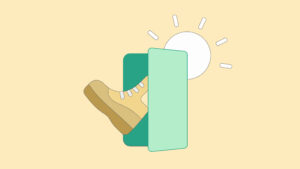 Humans are diurnal creatures 15 Verified Source National Library of Medicine (NIH) World’s largest medical library, making biomedical data and information more accessible. See the source , which means you’re programmed to be outside while the sun is out and inside (and sleeping) when it’s dark. This natural sunlight exposure has an effect on the production of melatonin, a hormone that largely controls how well you fall asleep.
Humans are diurnal creatures 15 Verified Source National Library of Medicine (NIH) World’s largest medical library, making biomedical data and information more accessible. See the source , which means you’re programmed to be outside while the sun is out and inside (and sleeping) when it’s dark. This natural sunlight exposure has an effect on the production of melatonin, a hormone that largely controls how well you fall asleep.
If you stay holed up inside all day, staring at your phone or a computer screen, it can cause imbalances in your circadian rhythm that make it more difficult for you to fall asleep at night. Exposing yourself to sunlight during the day, even just for a few minutes, can help counteract this effect 16 Verified Source National Library of Medicine (NIH) World’s largest medical library, making biomedical data and information more accessible. See the source .
As soon as you wake up, open the curtains in your bedroom. While your coffee is brewing, spend five minutes outside exposing your eyes and brain to sunlight. It’s a good idea to set your phone alarm for regular breaks and get outside for a few minutes in between Zoom meetings, too.
“Light is one of the strongest ‘time signals’ for our body clock,” says Dr. Nayantara Santhi. “For most of us, our daily light exposure largely consists of indoor artificial light, which also happens to be constantly available. This is cause for concern, because of the disruptive effects of too much evening light on our body clock and associated health consequences. Making sure we have enough outdoor natural light during the day and limiting artificial light after dark can go a long way in reducing these problems.”
Don’t Scroll Through Social Media
 This goes hand in hand with ditching screens before bed, but it’s worth its own callout. According to an observational study published in Sleep Health, about 70% of people check social media after they get into bed, and about 15% spend an hour or more mindlessly scrolling 17 Verified Source National Library of Medicine (NIH) World’s largest medical library, making biomedical data and information more accessible. See the source .
This goes hand in hand with ditching screens before bed, but it’s worth its own callout. According to an observational study published in Sleep Health, about 70% of people check social media after they get into bed, and about 15% spend an hour or more mindlessly scrolling 17 Verified Source National Library of Medicine (NIH) World’s largest medical library, making biomedical data and information more accessible. See the source .
This can be a problem in and of itself, since spending an extra hour on your phone can prevent you from getting the recommended amount of sleep each night. But it’s also an issue on its own. One study looked at the social media habits of almost 300 adolescents and found that social media use was directly correlated with poor sleep quality 18 Verified Source National Library of Medicine (NIH) World’s largest medical library, making biomedical data and information more accessible. See the source . The more the study participants checked social media, the worse their sleep.
While it’s unrealistic to tell you to get rid of social media for good, try to be more mindful of your use. Check your social media once or twice per day, and try to limit your use to the earlier hours.
SEE ALSO: Screen Time vs. Lean Time
Upgrade Your Bedding
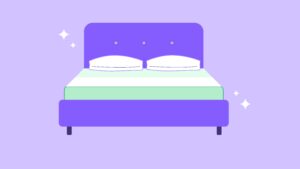 According to an older survey, an uncomfortable mattress contributes to at least 7% of sleep problems. Your bedding, which affects your body temperature and overall thermal environment, also plays a role.
According to an older survey, an uncomfortable mattress contributes to at least 7% of sleep problems. Your bedding, which affects your body temperature and overall thermal environment, also plays a role.
While comfort is largely subjective when it comes to bedding, some studies show that many people prefer a medium-firm mattress. That firmness level also seems to be the best at alleviating back pain, which can keep you up at night.
Cooling bedding is also important, as your mattress, sheets, blankets and pillows can absorb the heat you release in sleep, causing discomfort as the heat builds up.
Some of our top guides for the best bedding on the market include:
- Best Memory Foam Pillows
- Best Hypoallergenic Pillows
- Best Sheets for Memory Foam Mattress
- Best Luxury and High-End Sheets
Get a Weighted Blanket
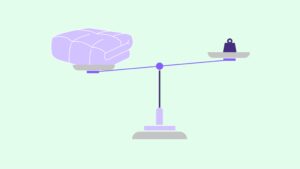 In addition to upgrading your bedding, you may also benefit from a weighted blanket, especially if your delayed sleep latency is caused by stress and/or anxiety. While there’s still more research needed in this area, one study that was published in the Journal of Clinical Sleep Medicine found that weighted blankets could help improve insomnia and related daytime symptoms like sleepiness in those with concurrent mental health disorders, like general anxiety disorder (GAD), attention deficit hyperactivity disorder (ADHD), major depression, and bipolar disorder 19 Verified Source National Library of Medicine (NIH) World’s largest medical library, making biomedical data and information more accessible. See the source .
In addition to upgrading your bedding, you may also benefit from a weighted blanket, especially if your delayed sleep latency is caused by stress and/or anxiety. While there’s still more research needed in this area, one study that was published in the Journal of Clinical Sleep Medicine found that weighted blankets could help improve insomnia and related daytime symptoms like sleepiness in those with concurrent mental health disorders, like general anxiety disorder (GAD), attention deficit hyperactivity disorder (ADHD), major depression, and bipolar disorder 19 Verified Source National Library of Medicine (NIH) World’s largest medical library, making biomedical data and information more accessible. See the source .
See also:
- Best Weighted Blankets: Reviews and Buyer’s Guide
- Best Cooling Weighted Blankets: Reviews and Buyer’s Guide
- Can Weighted Blankets Help with Anxiety and Insomnia?
- Can a Weighted Blanket Be Too Heavy?
Stick To a Consistent Sleep Schedule
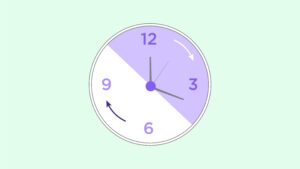 Research shows that an irregular sleep schedule can contribute to poor sleep quality 20 Verified Source National Library of Medicine (NIH) World’s largest medical library, making biomedical data and information more accessible. See the source . On the flip side, sticking to a consistent sleep schedule can regulate your sleep-wake cycle, which promotes a more restful sleep.
Research shows that an irregular sleep schedule can contribute to poor sleep quality 20 Verified Source National Library of Medicine (NIH) World’s largest medical library, making biomedical data and information more accessible. See the source . On the flip side, sticking to a consistent sleep schedule can regulate your sleep-wake cycle, which promotes a more restful sleep.
When deciding on your sleep schedule, consider what time you need to wake up in the morning and make sure you’re giving yourself the recommended amount of sleep.
Don’t Nap
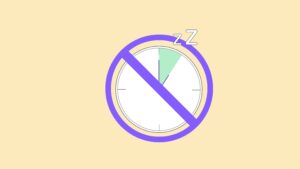 Poor sleep and daytime naps often go hand in hand, but if you want to fall asleep faster—and have better sleep quality overall—resist the urge.
Poor sleep and daytime naps often go hand in hand, but if you want to fall asleep faster—and have better sleep quality overall—resist the urge.
According to a study published in the Journal of Clinical Sleep Medicine, taking a nap during the day can negatively affect the quality of sleep you get at night 21 Verified Source National Library of Medicine (NIH) World’s largest medical library, making biomedical data and information more accessible. See the source . Daytime naps can make it harder to fall asleep at night and increase daytime sleepiness. Naps also contribute to sleep inertia, that groggy feeling you may experience when you wake up after snoozing in the middle of the day.
If you absolutely can’t get through the day without a nap, stick to 10 minutes at most. While short naps can improve alertness, 30-minute or longer naps can interfere with nighttime sleep, sleep latency, and sleep quality.
Limit Your Caffeine Intake
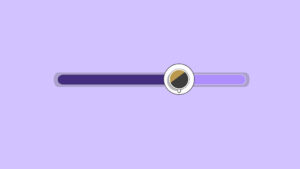 Drinking a small amount of coffee in the morning can have positive effects, like improving focus and energy, but if you have too much caffeine later in the day, even six hours before bedtime, it can make it more difficult to fall asleep.
Drinking a small amount of coffee in the morning can have positive effects, like improving focus and energy, but if you have too much caffeine later in the day, even six hours before bedtime, it can make it more difficult to fall asleep.
In a study published in the Journal of Clinical Sleep Medicine, researchers had participants drink 400 milligrams of caffeine—about the amount in four cups of coffee—within six hours of bedtime, within three hours of bedtime, and at bedtime 22 Verified Source National Library of Medicine (NIH) World’s largest medical library, making biomedical data and information more accessible. See the source . Even six hours before bedtime, the caffeine interfered with sleep quality and led to sleep fragmentation, or constantly waking up in the middle of the night. While you don’t have to ditch your coffee, try to stick to one cup early in the day. If you need more later, stick to decaf, but keep in mind that even decaffeinated coffee has small amounts of caffeine in it.
When To See a Doctor
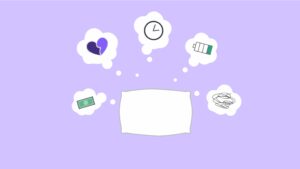 Everyone experiences a sleepless night once in a while, but a chronic lack of sleep can have serious health consequences. If it always takes you a long time to fall asleep or you can’t fall asleep at all, it might be time to check in with your healthcare provider to see if you have an underlying sleep disorder.
Everyone experiences a sleepless night once in a while, but a chronic lack of sleep can have serious health consequences. If it always takes you a long time to fall asleep or you can’t fall asleep at all, it might be time to check in with your healthcare provider to see if you have an underlying sleep disorder.
Some signs that you may need a checkup include:
- You have trouble falling asleep more often than not
- You regularly have trouble staying asleep
- You don’t feel refreshed when you wake up, even after getting at least seven hours of sleep
- You experience excessive daytime sleepiness
- You regularly fall asleep watching television or reading
- You’ve had a sleeping partner tell you that you snore loudly or sound like you’re gasping for air at night
The Takeaway
Millions of people have trouble falling asleep, but that doesn’t mean it’s normal. If you have a delayed sleep latency—defined as taking longer than 20 minutes to fall asleep—there are many things you can do to help you fall asleep faster. While some of these things can be done on the spot, others require you to think ahead.
The best way to improve your sleep onset is to build better habits that contribute to overall good sleep hygiene. This means limiting your screen time, being mindful of how much caffeine you’re consuming, and developing a consistent sleep schedule, as well as practicing relaxation techniques and finding ways to manage anxious thoughts that may be contributing to difficulty falling asleep.
